The engineer shall strictly test the Tungsten Carbide powder purchased from the supplier.
Generally, from the physical and chemical aspects of the test.
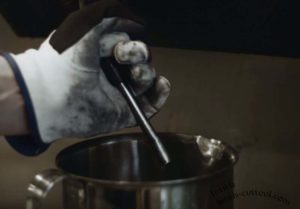
The raw material typically made up of 80% tungsten carbide powder and 20% micronutrient.
A blade usually takes 48 hours to produce.
Milling Room wet grinding
Etoh 2O and some other natural bonding phases.
Usually 10 to 24 hours.
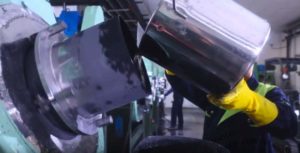
After the wet grinding, it goes to the next step, the spray drying tower.
Spray drying tower can make the powder more uniform, which directly determines the use of the final product performance.
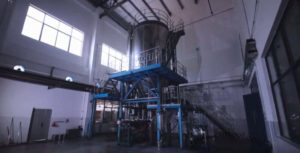
The previous Etoh and H20 will evaporate during this process.
Some of your suppliers may not have this spray drying tower because of its high price. The smaller ones cost around 300 million RMB.
This equipment makes the powder more uniform and beautiful, such powder after pressing forming, not accessible to delamination, or carburization and other problems.
The next procedure is pressing; the large tonnage automatic press is usually in 16-20tons.
After pressing the blank will be weighed by professional operators, for the initial testing.

The rough that’s just been pressed, it’s fragile. There’s still sintering to do. The vacuum pressure is carried on the furnace surface at a temperature of 1500 facility temperature.
The melting point of the bonded phase cobalt is 1495 °C. So at this point, the cobalt in the vacuum pressure furnace becomes liquid.
The cemented carbide sintering process can be divided into four primary stages:
1: Removing the forming agent and the pre-sintering scene, during which the SINTER changes as follows:
In the early stage of sintering, with the increase of sintering temperature, the sintering agent will decompose or vaporize gradually, and the sintering body will exclude, the amount of carbonization will vary with the type and quantity of the forming agent and the sintering process.
The oxide on the surface of the powder reduced. At sintering temperature, the oxide of cobalt and tungsten can be reduced by hydrogen. The contact stress between the powder particles gradually eliminated, the bonded metal powder begins to recover and recrystallize, the surface diffusion begins to take place, and the strength of the Briquette increased.

2: Solid Phase sintering stage (800 °C — EUTECTIC temperature)
At the heat before the liquid phase, the solid phase reaction and diffusion intensified, the plastic flow is enhanced, and the sintered body has visible shrinkage.
3: Liquid Phase sintering stage (EUTECTIC temperature-sintering temperature)
When the liquid phase occurs, the reduction completed quickly, and then the crystallization transformation takes place, forming the basic structure and structure of the alloy.
4: Cooling Stage (sintering temperature-room temperature)
At this stage, the microstructure and phase composition of the alloy change with the different cooling conditions, so the cemented carbide can be heat-treated to improve its physical and mechanical properties.
The temperature of the blade is very high after blowing in the furnace, and the size of the edge after sintering is 1 / 2 of the original one.
Once the blade is out, Grinding is next. One BY ONE. On different CNC grinding machines. Shape and tolerance.
With a cutting fluid
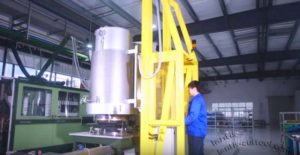
CVD Chemical Vapor deposition
PVD Physical Vapor deposition
The PVD device automatically loads a large piece and then PVD.
This makes the blade harder and stronger. More resilient.
And the blade can be colored throughout the process. Certain colors.
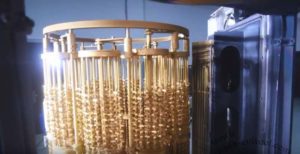
The PVD program is manufactured and manually tested, after which it is packaged.
Packaging equipment.
After the tungsten carbide raw material has passed the inspection


Leave A Comment